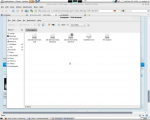I have a dual boot Windows XP and Ubuntu 10.04. Recently I reinstalled Windows and I had to set up GRUB again, but this time there was a problem, I was constantly getting Error 15. I set up GRUB with these commands:
Code: Select all
sudo i
mount /dev/sda? /mnt
partition grub-install --root-directory=/mnt/ /dev/sda
But there are still a few more problems:
- can't unmount the partitions without root privileges even though I chown to my account and chmod to 777
- when I plug in my external HDD I have to manually mount it
- it doesn't show my DVD drive at all (and it used to)
- and finally I updated the kernel a few times already but they don't show in GRUB, just the version that were there when I set it up again using that code up there
Any thoughts how I can fix these?



